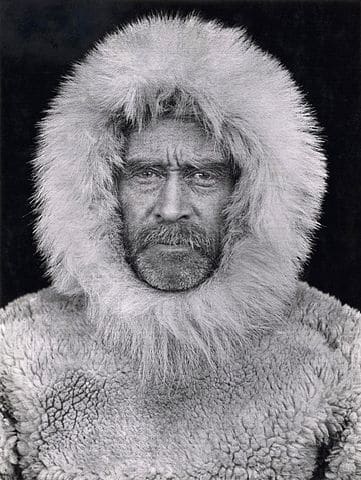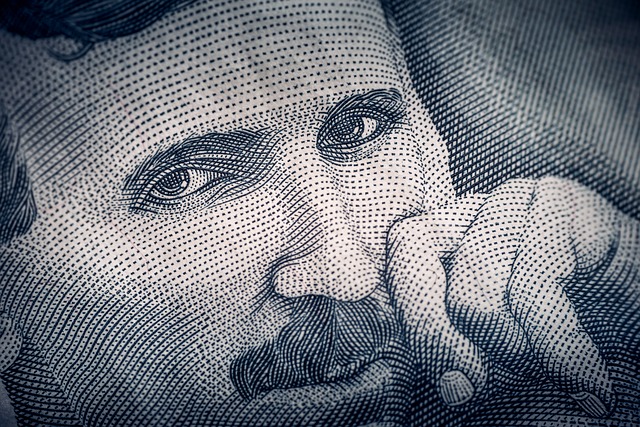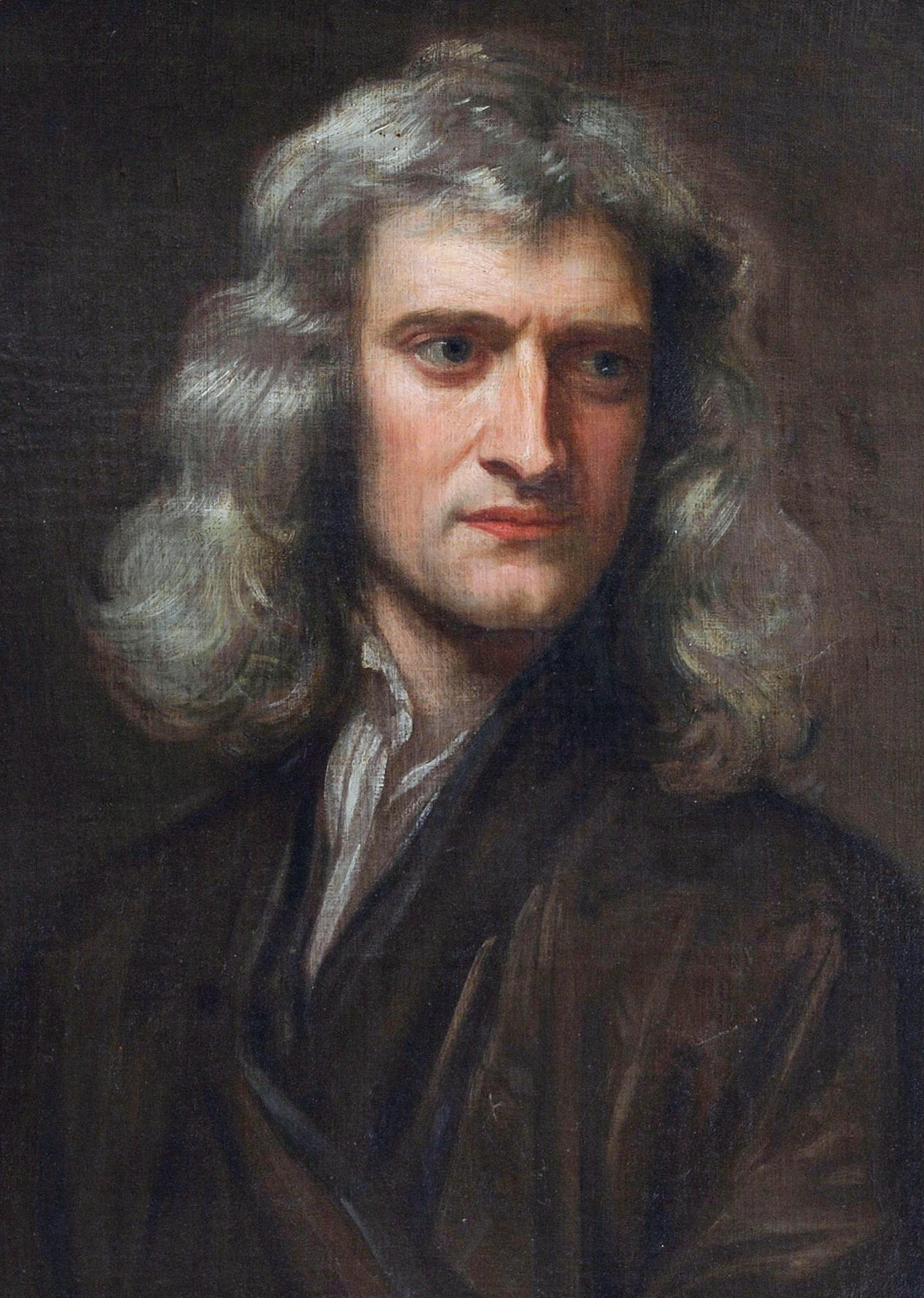History books will often lead you to believe that the world’s great inventions and discoveries were the work of a single person with a flash of genius, but the reality is rarely that simple. In most cases, it was only after years of work and input from countless inventors that something was finally created. Still, there are plenty of instances where the rush to ascribe credit for a particular discovery led to large scale controversy, and it wasn’t unusual for these arguments to take on personal and often illegal turns. Here are ten of the most famous examples:
10. The Invention of the Intermittent Windshield Wiper
By Source, Fair use, Link
Early windshield wipers had only one speed, and this made them distracting and even dangerous in certain conditions. The intermittent windshield wiper solved this problem by letting drivers adjust the speed of their wiper blades, allowing for lag time and slower action when driving in light rain. American inventor Robert Kearns filed a patent for the intermittent wiper in 1964. He shopped his new invention around to the “Big Three” auto manufacturers, but he had no luck getting them to license it as a product. A few years later, though, a form of intermittent wiper nearly identical to Kearns’s prototype began appearing as a standard feature on most of their cars. Kearns sued Ford for patent infringement in 1978, and took Chrysler to court four years later. The companies argued that the intermittent wiper was obvious and had no new components, and therefore didn’t meet the standards of being a novel, patentable invention. Kearns disagreed, and would eventually spend nearly 15 years and over $10 million in legal fees in his fight to be compensated.
Who Deserves the Credit?
According to the American court system, Kearns deserves the credit for inventing the intermittent wiper. He settled out of court with Ford for $10 million in the early ’90s. Meanwhile, the Chrysler case became a high profile lawsuit, which Kearns won in 1995 to the tune of $30 million in overdue compensation. Kearns died in 2005, but his fight with the big auto manufacturers remains one of the most famous patent infringement cases in U.S. history, and his story was even made into a movie called Flash of Genius in 2008.
9. The First to the North Pole

The first person to make a claim on having reached the North Pole was the American adventurer Frederick Albert Cook, who in 1909 said he’d made the journey with two Inuit companions in April of 1908. According to Cook, harsh weather conditions had made a return too dangerous, and he had been forced to spend the winter in the Arctic. But Cook was able to produce little proof of his accomplishment, and he was immediately regarded by some as a fraud. Perhaps his harshest critic was the explorer and Naval engineer Robert Peary, who surfaced only five days later with the claim that he had just returned from a successful polar expedition in April of 1909. Peary was a master of working the media, and he and his supporters soon began questioning Cook’s claim. The argument turned personal after both men sold their expedition stories to rival newspapers, and what followed was muckraking on an epic scale. Peary and company began researching all of Cook’s previous accomplishments—including a summit of Mt. McKinley a few years prior—and they even questioned his sanity. Cook eventually left the country, an act that was seen by many as an admission of guilt, and the National Geographic Society subsequently awarded Peary the credit for being the first to reach the North Pole.
Who Deserves the Credit?
As it so happens, most of Peary’s charges against Cook were largely justified. There is no historical evidence that Cook made it to the Pole, and today most historians have cast his claim aside. What’s surprising, though, is that the same can be said of Peary. Modern researchers have found countless holes in his story—chief among them that his party contained no navigator skilled enough to lead them to the Pole—and all attempted recreations of his journey have found many of his claims about how fast he progressed to be completely baseless. There have been many other claims since then, but amazingly no one was able to indisputably reach the Pole via an overland route until 1968, when a group led by Ralph Plaisted made the journey on snow mobiles.
8. The Invention of Calculus
In the early 18th century, calculus was at the center of a years-long controversy that raged between two of the world’s most famous mathematicians: Isaac Newton and Gottfried Leibniz. Both men had been experimenting with the new branch of mathematics for much of the late 1600s. Leibniz was the first to publish an official paper on the subject in 1684 (Newton would take until 1693), but friends and associates of Newton were quick to point out that Newton’s notebooks made reference to calculus as far back as 1666. Moreover, they argued that Leibniz was privy to Newton’s early work, and some even accused him of plagiarism. Leibniz and his supporters argued that his calculus discovery came independently of any of Newton’s work. Despite these protests, the majority opinion was always on the side of Newton. At best, Leibniz was credited with having invented an alternate (albeit superior, in many ways) form of notation for Newton’s discovery.
Who Deserves the Credit?
A 1713 review by the Royal Society found Newton to be in the right, and he was widely regarded as the inventor of calculus for the next 100 years. Today, though, it is widely believed that both men contributed different pieces of the puzzle independently of one another. Newton is regarded as the founder of infinitesimal calculus, while Leibniz is considered the father of integral and differential calculus.
7. The Discovery of Neptune
The planet Neptune was first observed in the early seventeenth century by Galileo, who hypothesized that it might be a star. But it was not until the 1800s that a serious search for it began, after scientists noticed that Uranus’s orbit seemed to be affected by an outside gravitational force. The British mathematician John Couch Adams was the first to hypothesize that this object might be a new planet, and in 1843 he made the first calculations of its possible orbit and size. A couple years later, the French astronomer Urbain Le Verrier undertook the same investigation independently of Adams and came up with similar calculations. Both men had trouble getting their colleagues interested in the search, so Le Verrier wrote a letter to an observatory in Berlin asking them to use their telescope to search the skies for his hypothetical planet. Le Verrier’s letter arrived on September 23, 1846, and using his calculations, a student at the observatory discovered Neptune that very same night. Almost immediately, there was a controversy over who—Adams or Le Verrier—could claim the discovery as his own. The rivalry eventually took on nationalistic overtones, with both the French and the British claiming their scientist was responsible for finding Neptune.
Who Deserves the Credit?
After some squabbling between rival groups, it was decided that Adams and Le Verrier would share the credit for discovering Neptune. But despite this consensus, all evidence points to Le Verrier as the more deserving of the two. Not only did he encourage the search that found the planet, but it was also his calculations that made it possible, as they were within one degree of the planet’s actual location. Adams, meanwhile, was as many as 12 degrees off course.
6. The Invention of the Movie Camera
Who invented a particular technology often varies depending on where you are in the world, and the movie camera is a perfect example. In the U.S., as with many inventions, the credit has always gone to Thomas Edison, who first made moving pictures in the early 1890s. In the U.K., the honor goes to William Friese-Greene, who issued one of the earliest camera patents in 1889. In France, the fathers of the cinema are considered to be Louis and Auguste Lumiere, who invented the cinematographe and first began shooting and exhibiting films in 1895. Looming over them all is Louis Le Prince, a largely forgotten Frenchman who designed a motion picture camera and projection system in 1888 before disappearing without a trace. Just who deserves the most credit among these inventors has always been a subject of contention. Patent controversies abound, especially in the case of Le Prince, who was denied a patent on a single lens camera in the U.S., only for Edison to be given a remarkably similar patent a few years later. In addition, there is still a debate about what really constitutes a “moving picture camera.” Modern movies run at 24 frames per second, but most of these proto-films were lucky to achieve a rate half that fast. This has frequently been a source of criticism against Friese-Greene, whose camera only ran at ten frames per second, which is such a low rate that some have argued it doesn’t even qualify.
Who Deserves the Credit?
Louis Le Prince’s mysterious disappearance meant that he wasn’t able to exhibit his invention as much as the others, so he never built the same reputation as people like Edison or the Lumieres. Still, as more information is uncovered, it seems that film historians are continually moving towards Le Prince as the true inventor of the film camera. His patent from 1888 was the first of all these inventors. Meanwhile, the world’s oldest surviving film, the two-second Roundhay Garden Scene, was shot with his camera. There’s little doubt that the other inventors deserve some credit, especially the brothers Lumiere, who were pioneers in perfecting modern film projection systems. But when talking about who really invented the first film camera, the evidence points to Louis Le Prince.
5. The Invention of Radio

There were a number of scientists who played crucial roles in the race to first transmit and receive radio signals, but the main invention controversy has always centered on the famed Serbian-Croatian inventor Nikola Tesla and the Italian Guglielmo Marconi. As early as 1891, Tesla was giving speeches on the possible practical uses of radio waves in mass communication, and he was even said to have demonstrated a wireless system in 1893. But Tesla, always hampered by a poor business sense, failed to capitalize on radio as a marketable tool, and though he claimed to have made 50-mile radio transmissions as early as 1895, none were ever verified. Marconi, meanwhile, applied for a patent on a radio system as early as 1896. In 1897, he formed his own wireless company and became the first man to commercialize radio. He was also the first to make a transatlantic radio transmission in 1901, though this claim has been disputed. What’s more, Marconi is believed to have based most of his radio designs on ideas that had already been widely described by Tesla and another inventor named Oliver Lodge. Tesla was the first of the two to receive a patent for his radio transmitter, but this was later overturned in a controversial decision and given to Marconi. Over 40 years later, this decision was itself overturned by the U.S. Supreme Court after countless legal challenges. Tesla had died only months earlier.
Who Deserves the Credit?
To give sole credit to either of these men is a grand generalization, but of the two, Tesla certainly seems the more important figure. There’s no argument that Marconi was the more business savvy of the two inventors, and his practical implementation of radio definitely makes him a major player in its creation. But it was Tesla who was most responsible for the ideas and the technical expertise that truly made radio transmission possible, and if anyone deserves the title of “the father of radio,” it’s him.
4. The First Flying Machine

Who Deserves the Credit?
According to the modern definition of a “flying machine,” it would seem that the Wright brothers are correctly considered to be flight’s true pioneers. They might not have been “first in flight,” as North Carolina license plates like to proclaim, but they did perfect a lot of the technology that is still used in aviation today. What ultimately sets them apart from the others is how controlled and prolonged their flights were. Richard Pearse got airborne before the Wright Brothers, but his plane crashed into a hedge. Meanwhile, Jatho’s plane only got ten feet off the ground, and Whitehead’s claims, while interesting, are largely unsubstantiated. If anyone deserves to share some of the honor with the Wrights it is the British glider pilot Cayley, who discovered many key aviation forces like drag and thrust, and who has often been called the unsung “father of aviation.”
3. The Discovery of HIV

In the early ‘80s, AIDS was already recognized as a serious epidemic, and research teams were soon formed to try and isolate the particular virus that caused it. Of these, two groups—one led by the French scientist Luc Montagnier and the other by the American Robert Gallo—nearly simultaneously published papers in 1983-4 describing the virus we now know as HIV. A controversy soon erupted in the scientific community over which group had more of a claim to the discovery. Montagnier’s group had published first, but Gallo’s description was more detailed and specifically linked the virus to AIDS. The fervor over ownership of the discovery centered on more than just prestige, since the country responsible would be able to claim the patent for an AIDS test. Soon, both the French and American governments were involved in what was often a bitter dispute. There were even cries of foul play, as Gallo and company were charged and later cleared of having “misappropriated” a sample of the virus they received from Montagnier’s institute.
Who Deserves the Credit?
Today, it’s widely agreed that both parties made major contributions to the discovery of HIV. Montagnier’s group published first, and as such they are commonly regarded as having first isolated the virus, but Gallo is credited with developing a great deal of the research and technology that linked it to AIDS. The two scientists themselves are now on amicable terms, and they’ve frequently worked together over the years. Still, this hasn’t stopped awards committees from picking favorites: in 2008, only Montagnier was awarded the Nobel Prize for his work in the discovery of HIV, an honor which even he noted should have been shared with Gallo.
2. The Invention of the Light Bulb

Who Deserves the Credit?
Edison’s discoveries undoubtedly led to more modern and efficient light bulbs, but to list him as their sole inventor is a vast overstatement. Even his own patents describe his invention as merely an “improvement in electric lights.” His was the first reliable light bulb, but when talking about who invented the first light bulb, the credit must go to England’s Warren de la Rue, who was the first to run electricity through filament in a vacuum sealed tube, a feat he accomplished some 38 years before Edison in 1840.
1. The Invention of the Telephone

The real controversy, though, has always been between Bell and Gray, both of whom filed patents for a telephone on the exact same day in 1876. Critics of Bell often cast him as a shrewd businessman (which he undoubtedly was) who stole several of Gray’s ideas, and it has even been argued that Bell bribed a patent office employee and added in several key parts to his inventions days after he first filed it. These claims were partly vindicated in the 1880s, when a patent officer testified in court that Bell had paid him in order to look at Gray’s plans.
Who Deserves the Credit?
Today, popular opinion on who really invented the telephone depends on where and who you ask. In the U.S., it’s either Gray or Bell; in Italy, it’s Meucci. The controversy eventually led to lawsuits, and it was still being argued as recently as 2002, when the United States House of Representatives passed a resolution recognizing the contributions of Meucci in the invention of the telephone—a resolution which was countered only days later when the Canadian government officially recognized Bell. In the end, this is yet another case where several inventors deserve partial credit. Bell was the savvy businessman who was able to perfect and market what would become a world-changing invention, but there’s little doubt that Gray and Meucci both deserve to be recognized with him as the real inventors of the telephone.



19 Comments
The indian scientist name no where features in the invention of aeroplanes – could you please check the facts, Same for the invention of Radio
Pe 18 martie 1906 la Montesson, lâng? Paris, aparatul Vuia I a zburat pentru prima dat?. Dup? o accelera?ie pe o distan?? de 50 de metri, aparatul s-a ridicat la o în?l?ime de aproape un metru, pe o distan?? de 12 m
You still forget one of the most important contributions to flying-machines. The inventor is called Traian Vuia, a Romanian , who built a real airplane, before Santos Dumont.
It happened on the date of 18 th March 1906 , near Montesson, France. His aircraft , ” Vuia I ” – monoplane, accelerated on a distance of 50 m being airborne for 12 metres . He did had problems in controlling the plane and flight.
You are also forgetting about Glen Curtis for number 4. I think he deserves an honorable mention.
the reason for making inquires is because of the rapid development in technology to know the historical background of machinery and from whom it was discover
Did you forget the laser? After a 28-year battle, the US Patent office reissued a patent on the laser.
Hmmmm
Stem Cells?
Regarding the first flying machine, I think it is fair to mention that actually Santos Dumont was the first to build and flight a real airplane (using a gasoline engine), with witnesses (european Press and french glifht authorities), making a complete flight: take off, flight, and landing, on October 23, 1906.
It was not the first flying machine properly, but was the first flying machine that could be used to flight long distances and had its own propulsion system.
More can be seen at: http://en.wikipedia.org/wiki/Alberto_Santos-Dumon…
i can't believe the discovery of the structure of DNA isn't on this list!!
Charles F Ritchel should be mentioned on the the "first flying machine" one.
http://en.wikipedia.org/wiki/Charles_F._Ritchel
I know wikipedia isn't a "good source" but all of this is true. He was my **4 greats** grandpa. I have a newspaper article about him somewhere but it's barely readable. Just sayin.
its awesome pls keep it up. i like it
What? No DNA & Telephone in this list ?
The Telephone was the #1 Controversy.
Russian inventor Nikola Tesla?! If you said American you would be more right! It's actually Serbian-Croatian. Check your facts!
P.S. Great list!!!!
Yep, that's definitely a mistake. Not sure how that one got by me. Thanks for pointing it out to me.
Thanks for the correction, making the change now.
actually Tesla (originally Teslea) is ethnically Istro-Romanian. It's a small community of people that descend from medieval Romanians who settled in what is today Croatia.
Tesla was 100% Serbian, his father was Serbian Christian Orthodox Priest and Tesla himself wrote "I am proud to be Serbian in America"
He was born in the province of Lica which was compactly inhabited by istro-romanians since15-16th centuries. His original family name was Draghici ( a Romanian name). His family trade was carpentry which led to their named being changed into Teslea which comes from a specific Romanian carpentry tool.
Nice try…
Tesla is a Serb surname from Lika. Lika is part of Dalmacija, in which Serbs inhabited in the 7-8th century. The surname originates from the village Radu?e on the slopes of Velebit. In the census of 1712, one part of the village had Draganic surname, the other Tesla, from which it is indirectly concluded that part of the family changed their surname. It is assumed that the change could originate from one ancestor who had characteristically pronounced and strong upper jaw that reminded on tool for woodworking(Tesanje, Tesla). Ancestors of this family came from Pilatovci hamlet near Vucji Dol (Montenegro).